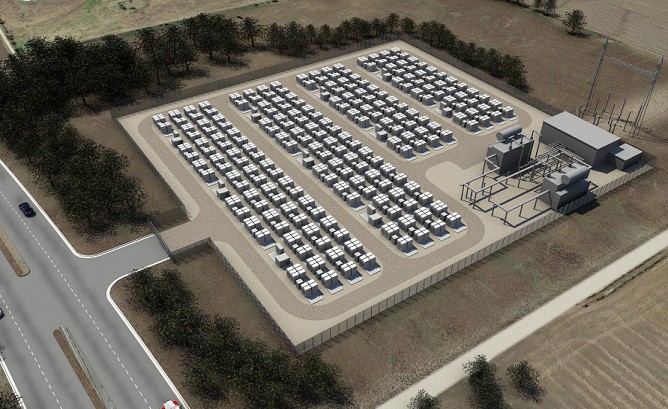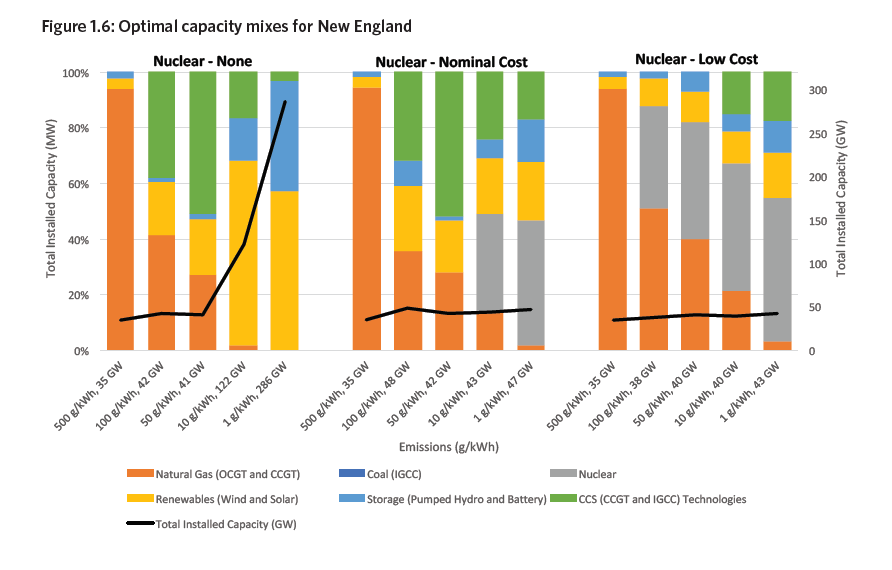We already have the perfect energy storage – nuclear fuel
If decarbonizing global energy systems is a priority; it seems obvious that all low carbon options should be considered as part of the solution. Yet, a year and a half after 21 prominent scientists disproved the Jacobson paper that claimed a 100% renewables electricity system is feasible in the USA by 2050, it remains a challenge for many people to move on to more sensible solutions. Hence the Green New Deal that says this 100% renewable dream can not only be achieved, but in half the time. In reality, it still just won’t work.
Imagine a world where the electricity system works like the
battery in your cell phone. You depend
on your phone and worry the battery will run out just as you need it most. To make things worse, even though there is an
electrical outlet available, you can’t charge your phone because these outlets
don’t work all the time. To keep your
anxiety in check, you must always carry spare batteries with you to make sure
your phone doesn’t die at the least opportune moment. Assuming you make it through the day, you would
like to charge your phone while you sleep so it is fully charged when you wake
up ready for a new day. Unfortunately,
you can’t charge it at night because your charger only works during the day at
the same time you most use your phone. Planning to keep your phone charged becomes a
constant pre-occupation as you go about your daily business.
This is the challenge with an electricity system based on
variable intermittent renewable energy sources.
We know that if we want to rely on wind and solar for all our
electricity needs, that wind only produces about 30 to 40% of the time, and
that solar panels only produce about 15% of the time. After all, we can’t make the sun shine, or
the wind blow more than they do. Therefore,
we need to find a way to save the energy produced when it is available using
some type of storage – like the extra batteries for your cell phone – that will
allow it to be used later when it is needed.

So how do you make sure you have enough energy to meet electricity
demand reliably in this scenario? The only
way would be to build lots and lots and lots of wind and solar, way more than
you need at any given time and do your best to store this large amount of excess
energy for later use. In other words, the intermittency of these resources
means you have to build a HUGE amount of capacity coupled with a large amount
of storage to get the same amount of energy you could otherwise get from a readily
dispatchable resource that is available whenever you need it, (which is why the
fossil industry loves this scenario because they know the most likely option is
using gas plants to meet the demand when renewables cannot.)
An MIT study “The Future of Nuclear Energy in a Carbon – Constrained World” published last year looks at what is needed to fully decarbonize a system both with and without nuclear energy. As can be seen below, replacing fossil fuels without nuclear means having to build a system that is an ORDER OF MAGNITUDE larger that what is currently in place. Yes, that is right. Without nuclear, you need to build a system of renewable energy and storage that is on the order of 10 times larger than what you have in place today to try and make sure you will always have enough energy available to meet demand. After all, it would be hard to imagine a future where our economies accept that it’s OK to run out of energy until the next time the sun shines or the wind blows.
For example, as can be seen from the figure, to eliminate the emissions from a 500g/kWh system in New England without nuclear power would require increasing the size of the system from 35 GW to 286 GW to replace gas with renewables and storage. (About 500 g/kWh is an average carbon emission for many systems around the globe today. This study looks at what it would take to bring that close to zero.) The figure also shows that decarbonizing by replacing gas with a combination of nuclear and renewables (or “nuables”) results in a system with little change in size to what is in place today, and at much lower cost. (For New England, the cost would be about half of a fully renewable system.) The MIT study looks at many regions. Achieving the same result for the UK means increasing the system size from 58 to 478 GW while Zhejiang China would need to increase the size of its grid from 78 to 1515 GW to get off fossil fuels without using nuclear power.

We have seen this in action.
To date as part of the Energiewende, Germany has doubled its system capacity
to replace some of its nuclear with a massive amount of renewables all to deliver
the same amount of energy to consumers with almost no impact to its carbon
footprint, and at higher cost; all while still relying on coal as its most
important form of generation.
This also bursts the fantasy that a fully renewable system
is local and environmentally friendly as the electricity system (the grid)
needs a huge amount of investment to support ten times as much capacity, not to
mention the very large amounts of land needed to place these wind and solar
collectors, and the huge amount of materials like steel and rare earths needed to
build them and then all the waste when it comes time to dispose of them at
their end of life.
As for storage, the task ahead is enormous. As stated in a recent article touting the benefits of battery storage from the IEA, “Today, pumped hydro storage systems account for the majority of storage capacity (153 GW, equivalent to about 2% of total power capacity worldwide, while battery storage systems total around 4 GW. However, while pumped hydro storage is projected to grow in the next decade, the technology deployment is largely constrained by the location of suitable sites.” This article then goes on to say battery storage can reach 400 to 500 GW by 2040, but this is still a drop in the bucket compared to what would be required. With the storage requirements for New England alone being about 100 GW, the global requirement would be in the many thousands of GWs to reach the levels required by a fully renewable system. And let’s not forget today’s batteries provide only short-term storage with technologies for long term storage nowhere near ready to meet a challenge of this magnitude.
Energy is most efficiently stored in fuel, like coal, gas or
uranium, and then burned exactly when it is needed. And which fuel stores the most energy?
Uranium. A single pellet of enriched
nuclear fuel about the size of the end of your little finger, has the same
amount of energy as one ton of coal. Or
to put it another way, uranium produces about 3 million times more energy from
a kg of U235 than coal does from a single kg of coal.

Now that is what I call energy storage. This little bit of fuel can produce a huge
amount of energy and it is accessible to us when we want it. If we need to decarbonize our energy systems,
and we want to do it relatively quickly, what makes more sense? Building a system that is ten times larger
than we currently have to produce the same amount of energy we produce today,
with all the materials and land that goes along with that, or building nuclear
plants that can produce huge amounts of energy from a small amount of resource? I know which option would let me sleep at
night – and would give me the best chance my phone alarm would actually work in
the morning.